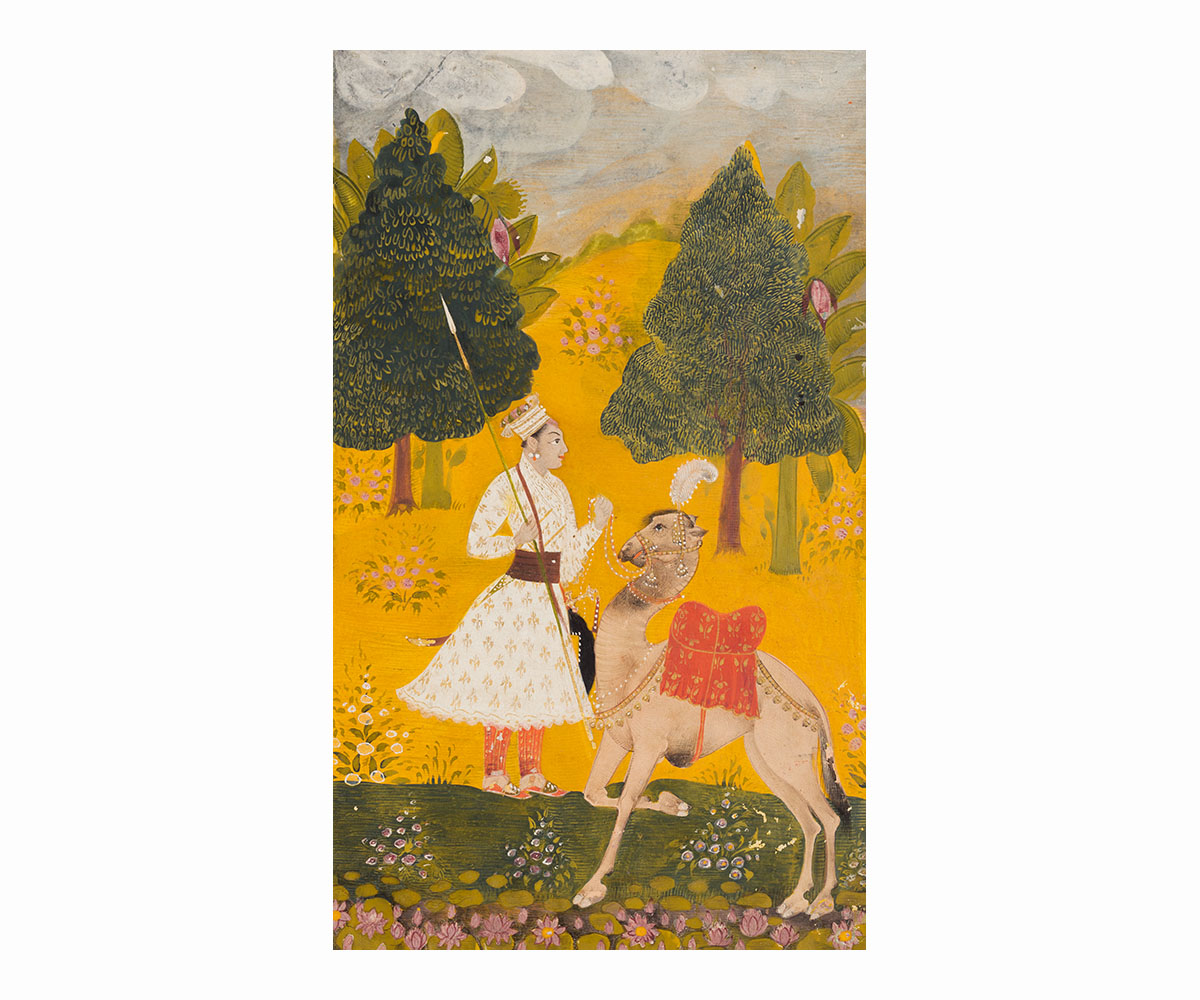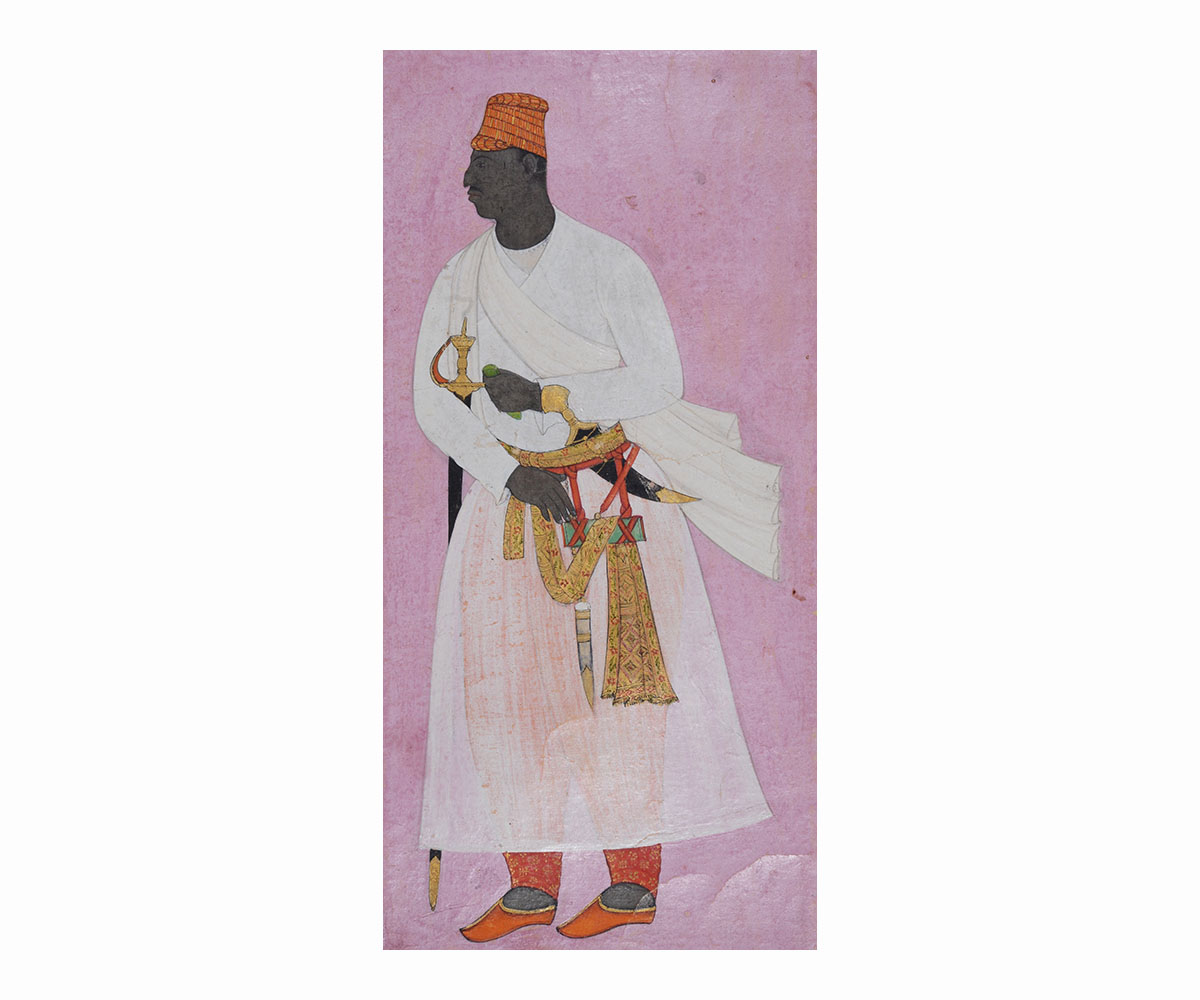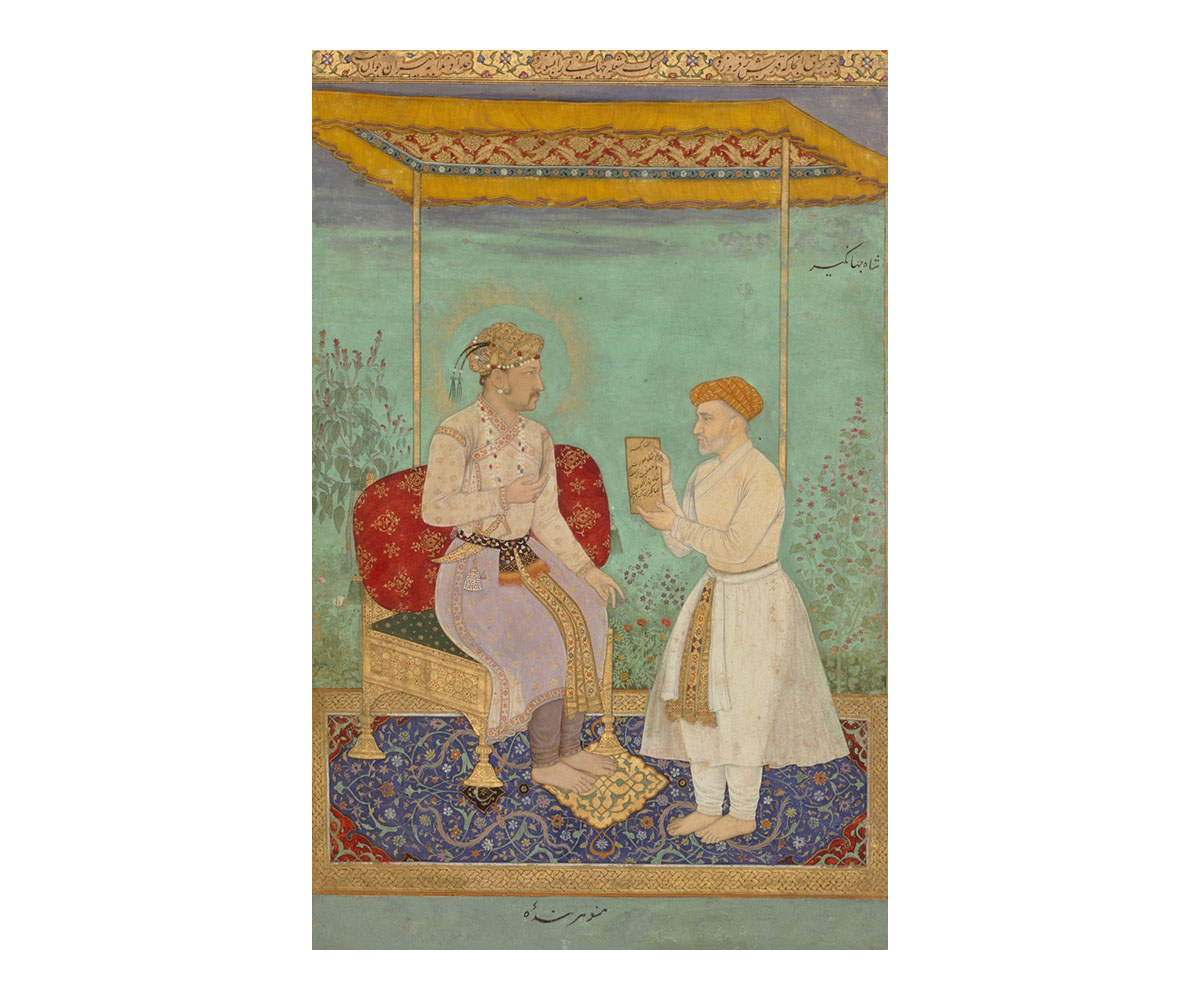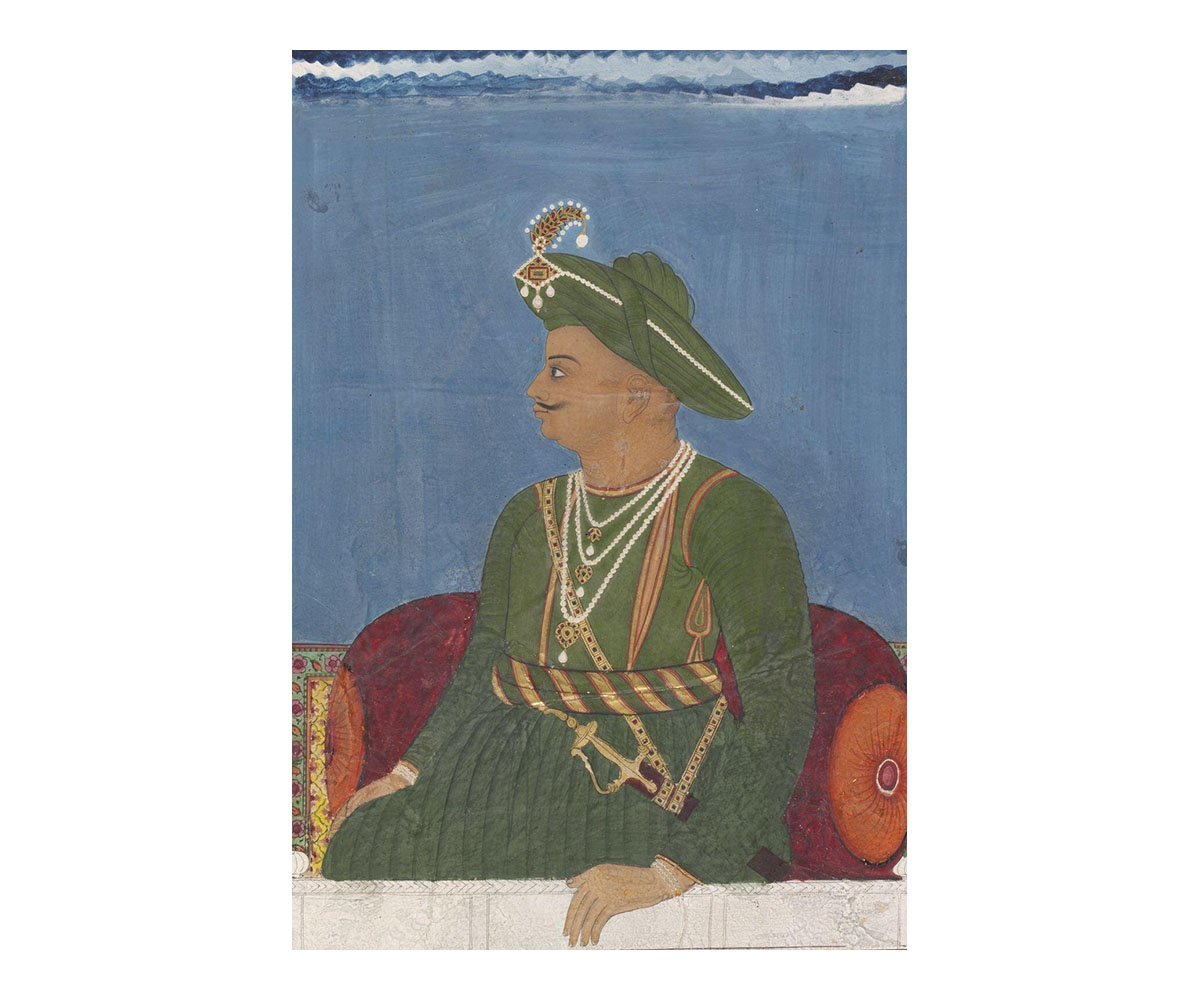ARTICLE
Cummerbund
A broad sash worn around the abdomen, or at the waist, the cummerbund covers the parts of the wearer’s shirt and trousers. Its name comes from the Urdu term kamar band, meaning “waistband,” and it is woven in cotton, wool, silk or synthetic fibres, most commonly in black, red or white. The cloth may also be embroidered with floral and vine motifs or left plain. Traditionally, the cummerbund had several pleats in the cloth, used for storing items including coin and tobacco pouches and ceremonial daggers. It was worn to support the lumbar region of the body, for warmth and to protect the skin against the harsh climate of the tropics.
While it is difficult to ascertain definitive dates for the origin of the cummerbund, it is present in various cultures such as the Ottoman Empire, pre-Modern Albania, Crete, Nepal and Britain as a part of their ceremonial, military and everyday dress. In India, the cummerbund was part of an officer’s uniform in the British army as an alternative to the waistcoat; a trend that was incorporated into the military uniform of the sepoys. By the late eighteenth century, British soldiers serving in India wore a flannel woollen cummerbund, often referred to as a “cholera belt.”
In recent times, the use of cummerbunds has shifted to a decorative piece of garment worn during ceremonies displaying a marked shift from its historical use.
Bibliography
Our website is currently undergoing maintenance and re-design, due to which we have had to take down some of our bibliographies. While these will be re-published shortly, you can request references for specific articles by writing to hellomapacademy@map-india.org.









![The façade of the Maneckji Seth Agiary, a Zoroastrian fire temple, is a standout example of the popularity of the Persian Revival Style in Western India in the 19th and 20th centuries. This style was often seen in the architectural patronage of the Parsis, who emerged as one of the most influential mercantile communities of British India. Popular motifs of this style, like the mythical lamasus (winged bulls with human heads) and the faravahar (a winged guardian spirit in Zoroastrianism), drew on the historical art and architecture of the Achaemenid and Sasanian empires from sites like Persepolis, Bisotun, Taq-e Bostan, Naqsh-e Rostam and Naqsh-e Rajab in Persia.
The Parsi community’s adoption of this style occurred largely due to their networks of global commerce and politics, allowing them to access and translate research of ancient Persia into visible symbols that underlined their association with antiquity, imperial power, and art.
نمای آتشکدهی زرتشتی مانِکجی سِت نمونهی بارزی از رواج سبک «احیای [معماری] ایرانی» در غرب هند طی سدههای نوزدهم و بیستم است. این سبک غالباً در بناهایی دیده میشد که پارسیان، از بانفوذترین جوامع بازرگان در هند بریتانیا، بانیشان بودند. نقشمایههای محبوب این سبک، مانند گاو بالدار اساطیری (لاماسو) و فَروَهَر (روح بالدار نگهبان در دین زرتشت)، برگرفته از هنر و معماری شاهنشاهی هخامنشی و ساسانی، در جاهایی چون تخت جمشید و بیستون و طاق بستان و نقش رستم و نقش رجب، بود.
اقتباس جامعهی پارسیان از این سبک بسیار مرهون روابط گستردهی تجاری و سیاسی آنها بود که دسترس به پژوهشها دربارهی ایران باستان و برگردانیدن آنها به نمادهای بصری را ممکن میکرد و بر پیوند پارسیان با دوران باستان و قدرت شاهنشاهی و هنر تأکید میکرد.](https://mapacademy.io/wp-content/plugins/instagram-feed/img/placeholder.png)
